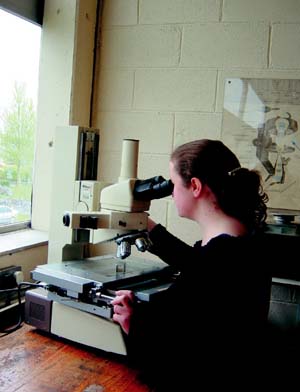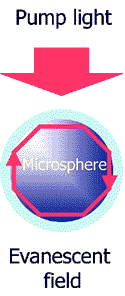| 2004 |

|
YEAR BOOK |
Cork Institute of Technology
|
Cold atoms and microlasers – tools for information and communication technologies
|

One may ask: why the interest in developing quantum strategies for information processing? Simply put, the real world is quantum mechanical in nature. Information is stored in the state of a physical system, and computation is performed using physical interactions. Therefore, the fundamental basis behind information theory must be founded in quantum mechanics. Quantum information can be viewed as information stored in the quantum state of a physical system, and exhibits many properties that differ from classical information. In particular, a quantum computer would have the capabilities of performing certain types of tasks far more efficiently than a classical computer. In the shorter term, there is a wealth of information to be gathered in the field of cold atoms that will make direct contributions to specific aspects of quantum information technology.
The Quantum Optics Group in the Department of Applied Physics and Instrumentation in CIT is creating a source of cold, neutral atoms using a technique known as magneto-optical trapping, whereby a cloud of atoms is trapped using a combination of lasers and magnetic fields. As one of the more obvious short-term goals, we are aiming at a thorough investigation of the interaction of cold atoms with surfaces, where the surface in question could form part of a quantum logic gate, be that the surface of a microcavity laser or an atom chip. In particular, the atom interaction with a microcavity is of interest for demonstrating basic quantum logic gates. Each two-level atom can be treated as a qubit for quantum logic operations, and entanglement may be obtainable via photon transmission. By improving the positional and parameter control of the cloud of cold atoms using standard control strategies, it should be possible to enhance the efficiency of photon exchange between the atom and the cavity.

This material is based upon works supported by the Science Foundation Ireland under Foundation Grant No. 02/IN.1/I28.
References
1. Thywissen J. H. and Prentiss M., arxiv.org/abs/physics/0209084 (2002).
2. Sandoghdar V. et al, Phys. Rev, A 54, R1777 (1996).
Contact: Dr Síle Nic Chormaic, Quantum Optics Group, Department of Applied Physics and Instrumentation,
Cork Institute of Technology, Bishopstown, Cork;
Tel: +353-21-432- 6300; E-mail: [email protected] ;Web: www.physics.cit.ie/Sile/Quantum_Optics.html